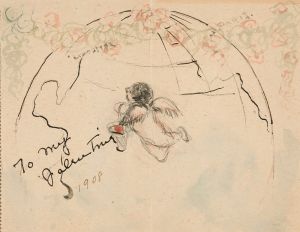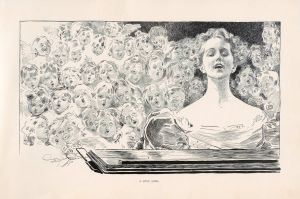
Le départ du fiancé
A hand-painted replica of James Tissot’s masterpiece Le départ du fiancé, meticulously crafted by professional artists to capture the true essence of the original. Each piece is created with museum-quality canvas and rare mineral pigments, carefully painted by experienced artists with delicate brushstrokes and rich, layered colors to perfectly recreate the texture of the original artwork. Unlike machine-printed reproductions, this hand-painted version brings the painting to life, infused with the artist’s emotions and skill in every stroke. Whether for personal collection or home decoration, it instantly elevates the artistic atmosphere of any space.
"Le départ du fiancé" (The Departure of the Fiancé) is a painting by the French artist James Tissot, created in 1878. Tissot, born Jacques Joseph Tissot on October 15, 1836, in Nantes, France, was a prominent painter and illustrator known for his detailed and often narrative-driven works. He spent a significant part of his career in England, where he became well-known for his depictions of contemporary life.
The painting "Le départ du fiancé" is part of Tissot's series of works that explore themes of love, society, and the complexities of human relationships. This particular piece captures a poignant moment of departure, with the central figure being a young man, presumably the fiancé, who is about to leave. The scene is set in a domestic environment, characterized by its detailed and realistic portrayal of the interior, which was a hallmark of Tissot's style.
In the painting, the young man is dressed in formal attire, suggesting that he is about to embark on a significant journey or event. The expressions and body language of the figures around him convey a mix of emotions, from sadness and longing to resignation. Tissot's use of light and shadow, as well as his attention to detail in the clothing and furnishings, adds depth and realism to the scene, drawing the viewer into the emotional narrative.
Tissot's work often reflected the social dynamics and cultural norms of his time, and "Le départ du fiancé" is no exception. The painting provides insight into the customs and expectations surrounding engagements and departures in the late 19th century. It also highlights Tissot's skill in capturing the subtleties of human interaction and the emotional undercurrents that define such moments.
"Le départ du fiancé" is housed in the Musée des Beaux-Arts in Nantes, France, which holds a significant collection of Tissot's works. The museum's collection provides a comprehensive overview of Tissot's artistic development and his contributions to the art world. This painting, like many of Tissot's works, continues to be appreciated for its technical excellence and its ability to convey complex emotional narratives through visual art.
James Tissot's legacy as an artist is marked by his ability to blend realism with narrative, creating works that resonate with viewers on both an aesthetic and emotional level. "Le départ du fiancé" remains a testament to his talent and his keen observation of human nature and society.


















